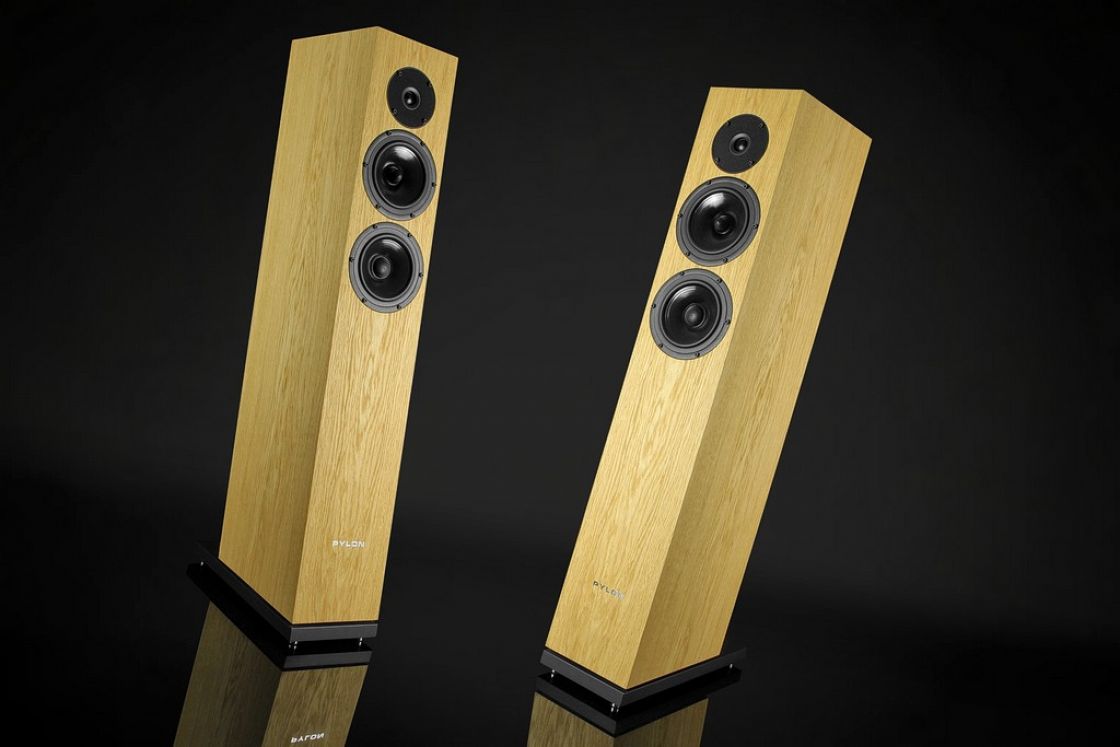
This article first appeared in StereoLife Magazine, a HiFi publication from Poland that offers “A Daily Dose of Audiophilism”.
English version edited by Robert Schryer.
While Poland’s most famous loudspeaker manufacturer started with budget loudspeakers, its current catalogue is dominated by mid- and high-end designs. The top position is occupied by the beautiful Jaspers, available in both passive and active versions.
Then we have three series each consisting of a single model—the Amber, Jade, and Emerald. The bottom four levels include the Ruby, Sapphire, Opal, and Pearl series. Right in the middle there’s a series that has become a real hit on the market, that combines minimalist design, high-quality workmanship, rich colour finishes, and natural, balanced, universal sound: the Diamond series, which was Pylon’s flagship range at the time of its launch.
I remember how the bosses of the Jarocin-based manufacturer, still unsure of the rightness of their decision, wondered whether such loudspeakers would appeal to customers. Today, the company could probably produce only this series and still easily balance the books (especially considering that Pylon Audio is not only a manufacturer of equipment sold under its own brand but also a supplier of cabinets for leading foreign brands). However, since there was an opportunity to improve them, it would have been a shame not to take it. This is how the Diamond MkIIs were born. To learn more, I decided to review my favourite model in the new series—the 25 Mkll.
Why favourite? It’s simple—in my opinion, these relatively compact floorstanders are perfectly suited to typical living rooms. They’re just right for the discerning but not extremely wealthy music lover. When the Polish company introduced the original Diamond 28 at the end of July 2015, everyone raved about them, while correctly pointing out that they should be placed in a very large room. On its website, the manufacturer recommends a room size of 25m² (269ft²) to 42m² (452ft²), but frankly speaking, I would treat this as a minimum requirement, especially considering that it’s hard to imagine a pair of loudspeakers the size of the 28s working as intended in a 25m² space.
This is where the Diamond 25 comes into play. It’s slightly smaller, but, in many respects—and this is my opinion—better-sounding. Its bass is not as powerful as that of the 28, but it sounds faster, tighter, and, consequently, more natural. Although the 25s require a reasonable distance from the wall due to their rear-mounted bass-reflex ports, they’re also easier to position and do not require as powerful an amplifier as the 28s. Add to that the speaker’s simple shape (despite the cabinet’s backwards tilt), SEAS drivers, attention to detail in design and woodwork, which are outstanding in this price class, and it becomes clear why the Diamond 25s have become such bestsellers.
CEO Mateusz Jujka of JRC, the company that owns the Pylon Audio brand, admitted that, in its original form, the Diamonds could have gone on for a few more years, as they haven’t really aged. From the customer’s point of view, the original 25 is just a very good, proven piece of equipment. Nor have I seen reports of defects or problems with parts availability down the road. Most companies with a similarly successful product would probably leave things be and happily continue shipping the same model. But that would have been too easy for Pylon Audio.
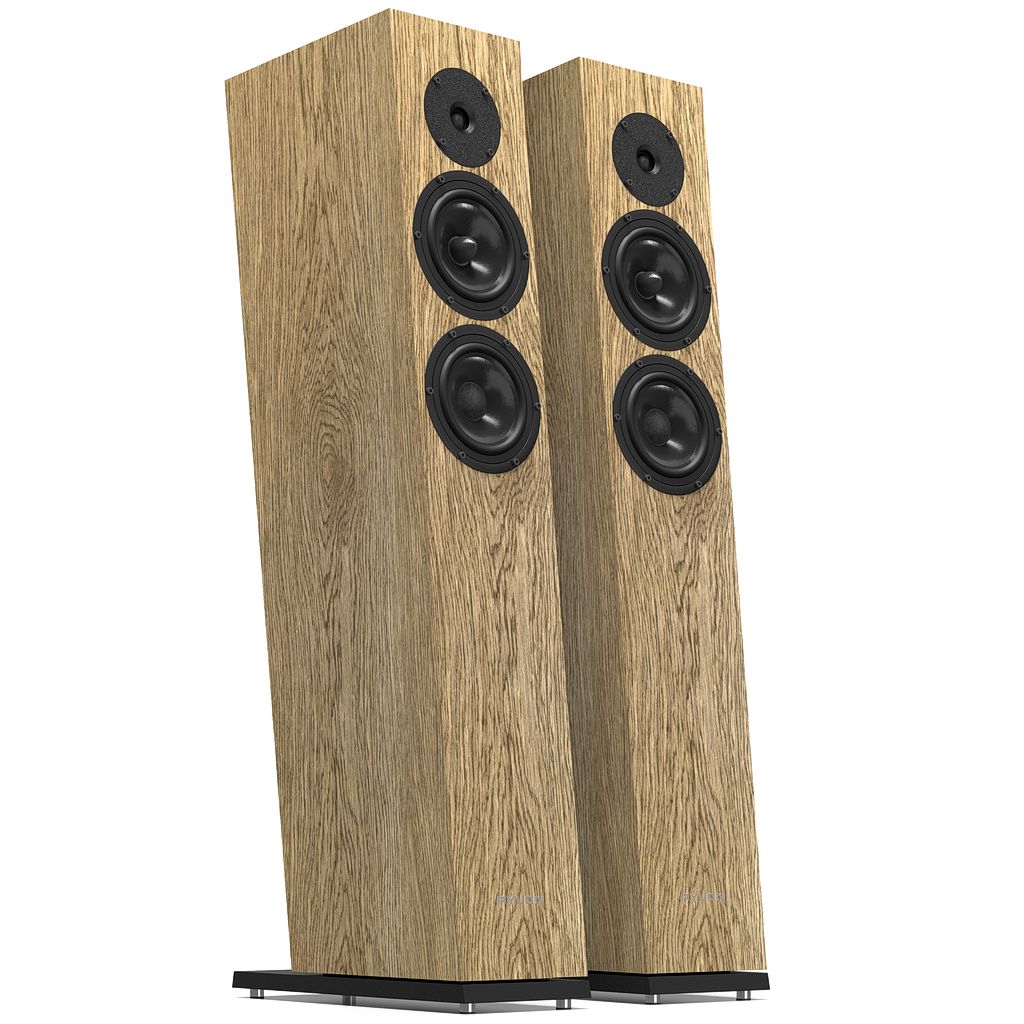
The new Diamond looks almost the same as its predecessor but is different in many ways, with its tilted angle, new plinth, different crossover, different driver placement, and even different drivers.
Design and Functionality
Why upgrade the Diamonds if customers weren’t asking for it? For several reasons. First, after less than nine years in operation, Pylon Audio has become a completely different company than it was when the first Diamond—the 28—was launched. Its factory has moved to a new location (probably even several times, eventually landing in a large space that should serve the company well for many years), it has more employees, new industry customers (Audio Physic is just one of the leading European loudspeaker manufacturers for whom Pylon supplies cabinets), a network of foreign distributors, top-tier manufacturing equipment (for both the production stage and for the design of new models), and even its own anechoic chamber. All of this gives these Polish designers opportunities they did not have before, and a technological edge over their competitors. Basic tools or software is something everyone can buy, but industrial vibrometers or an anechoic chamber? For many loudspeaker designers, it’s a dream that will probably never come true.
Second, growing sales mean more orders from suppliers, the most important being Scan-Speak and SEAS. Danish and Norwegian transducers are held in high regard by audiophiles, but loudspeaker manufacturers are increasingly opting for more exotic units or developing them themselves to make their equipment unique. Pylon is also doing this. Its most successful design, in my opinion, is the bass/midrange driver used in the Ruby series, that employs a diaphragm made of Endumax. It would be much simpler and cheaper to modify an existing Scan-Speak or SEAS model, but to do this, the drivers have to be ordered in bulk. Pylon has long since reached this purchasing level, so when SEAS was asked about the possibility of making some significant changes to the drivers used in the Diamond series, the Norwegians immediately agreed. The biggest change visible to the eye in both the midrange and woofer drivers is their phase plug, but in fact both 15cm (5.9″) units have been extensively redesigned. They received larger voice coils, a stronger magnetic system, and improved suspension. The tweeter is a new version of the Scan-Speak used in the first generation of the Diamond. It doesn’t stop there. Although the new Diamond appears similar to its predecessor, virtually everything has been changed—the tilt of the cabinet, the plinth, the dampening material, and the crossover. Of all the modifications, however, the biggest step forward has to be the drivers.
Third, even with such a large fan base in its home country, the Polish manufacturer has spread its sails into foreign markets so much that around 60% of its production is now exported. This trend is likely to continue, and this means that Pylon’s new speakers need to be tailored for a global audience. Two countries are key here: China and India (although the company is also looking at Taiwan, Hong Kong, Vietnam, and South Korea). Within two months, the Polish brand’s products were presented at nine major audio shows in China. Imagine a show like High-End Munich taking place every week in different cities, and you’ll get an idea of the scale of Pylon’s marketing push into Asia. After the first deliveries, Indian and Chinese distributors came back to Pylon with interesting feedback—the speakers’ build quality was great, as was their sound, but, maybe apart from the massive Amber MkIIs, they didn’t play, um… loud enough. Customers, especially in India, like to turn up the volume to the max. What we call concert levels is for them an average listening level that could go on for hours. The ideal loudspeakers for the Indian market should have high efficiency and be designed to work with a powerful amplifier. Pylon has listened and modified its speakers accordingly. These changes, according to Pylon, would also work in other markets, as they resulted in a sound that was overall more dynamic and tangible, while still maintaining the even, natural, and well-balanced presentation their earlier models were known for.
The Diamond 25 MkIIs arrived at our editorial office in two large cardboard boxes. Many manufacturers would fit two compact floorstanders into one box, but all the speakers in this series are larger than the pictures would suggest, or, to be more precise, deeper, due to the stabilizing plinth extending some 12cm (4.72″) behind the speaker. One drawback of the plinth, I feel, is that it is exactly the same width as the enclosure. Tall, slender loudspeakers can topple over to the side, which might not only cause damage to the speaker or objects around it, but be dangerous to children or pets. Fortunately, the company seems to have taken notice of the potential hazard and will soon be offering a larger plinth. (As with the older Diamonds, the entire plinth can be easily unscrewed and installed.) If you have a separate listening room, live alone, or aren’t worried that the speakers might topple, you might not see the need for wider plinths, but for those looking for added security, it’s good to know that more stable plinths will soon be available.
Like the first model, the Diamond 25 MkII boasts impeccable build quality, especially at its price. Polish carpenters have achieved true mastery and I am not surprised that companies from all over the world are queuing up to order their cabinets. We used to marvel at those of British, Scandinavian, German, or Austrian loudspeakers. But today, the factories where they were made either no longer exist or have switched to the production of furniture, and loudspeaker manufacturers are looking for subcontractors willing to do all the dirty work while keeping costs low. Bowers & Wilkins only makes top-of-the-line models in Worthing, UK, while the cabinets for Falcon Acoustics M10 monitors are made in Italy. Much of the industry is sourcing from China, but if you want a great product made by people who take into account not only looks but also acoustics, Pylon Audio has only a few worthy rivals in Europe.
The number of colour options available is also impressive. Many manufacturers offer three finishes—walnut veneer and white and black lacquer. Hardly anyone plays around with other colours, as this engenders additional costs and logistical problems. Pylon Audio isn’t dissuaded by this, and, in fact, has made its multi-colour offerings one of its trademarks. Although I prefer classic veneers, when I see a picture of red, green, blue, or purple loudspeakers, I take notice. The surcharge for the lacquer isn’t substantial. In its cheapest version, the Diamond 25 MkII costs €2550 / pair. A pair in matt lacquer (black or white) will cost €2765; in a glossy one, €2900. If you want to order a pair in a colour of your choice—you can do that—you will pay €3100 total. It’s also worth noting that the Diamond series is also bigger than it used to be. In addition to the 25 Mkll, there’s the larger Diamond 28 MkII and the really big, three-way Diamond 30 MkII, while both the Diamond Monitor MkII and the Diamond active subwoofer are scheduled to be released imminently. I think the release of a centre channel is only a matter of time, so, in addition to a stereo system, it will be possible to build a full home cinema system on a foundation of Diamonds. However, now I’m most interested in how the Diamond 25 MkII plays music.
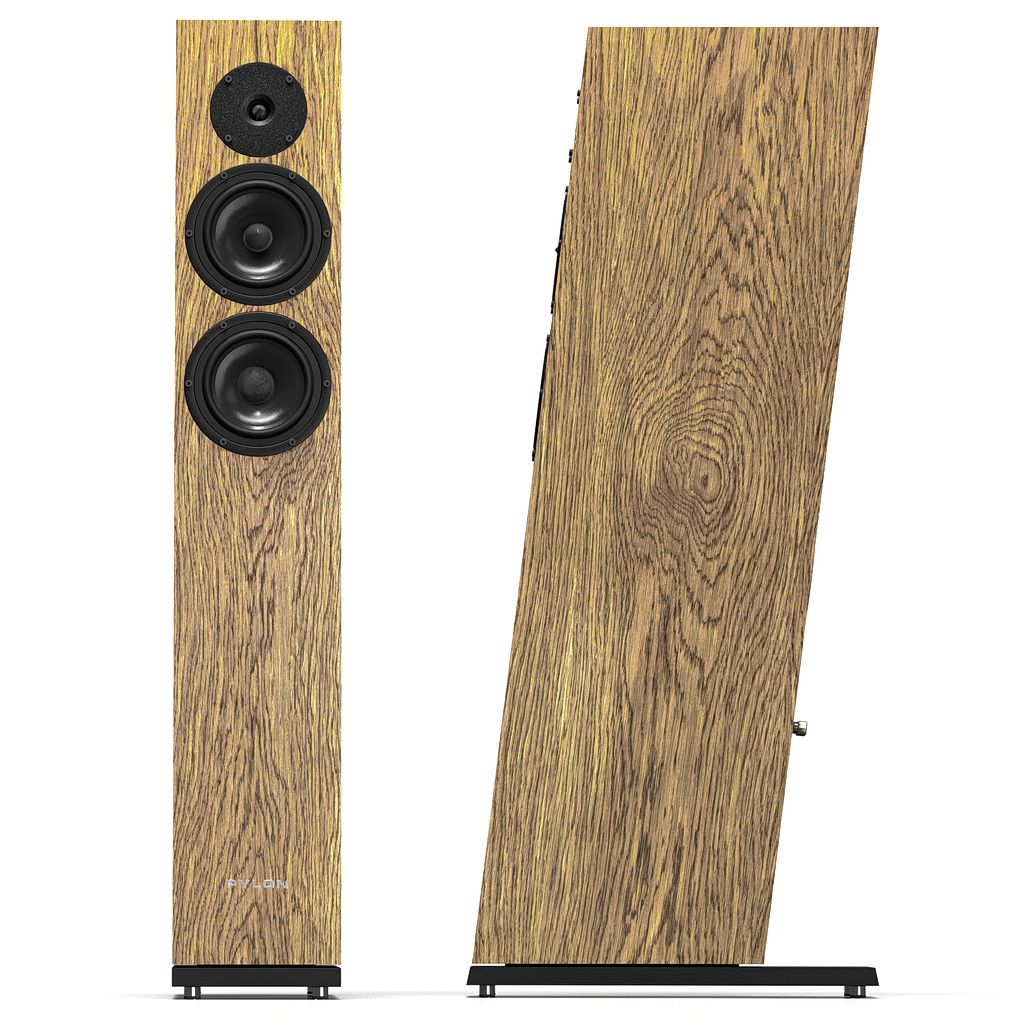
Sound
The first generation of the Diamond 25 became a hit due to a number of factors, the most likely one being its natural, well-balanced presentation that was easy to listen to. Unlike its bigger sisters, the 25 did not try to impress with low bass, but it did, compared to the bigger speakers, sound slightly faster and warmer in character. The 25 MkIIs also produced a coherent and transparent presentation that is rarely encountered in their price range. There was simply very little to criticize in the 25’s sound, as nothing in it was glaring or unusual. With the benefit of hindsight, I can say that the Diamonds were typical of the company’s house sound, because the Polish engineers, both before and after the corporate restructuring, followed the same design objective—to build speakers that could play evenly, coherently, while delivering a good amount of detail, but under no circumstance should they cross the line where bass would become too present, the midrange too forward, or the treble too bright.
The 25 was built and tuned with international music lovers in mind, who might prefer warmer bass, a somewhat polite British-style midrange, and a well-behaved treble even on mediocre recordings. The rocking, crushing sound of a no-holds-barred concert experience? Not likely with this brand’s products. Admittedly, many customers liked this pleasant, smooth character, while others began to point out that after a while the sound got boring. It could sometimes feel, when listening to our favourite artists, especially on recordings that weren’t perfect and should sound harder, akin to as if the system had been fitted with a built-in parental control system. Some people tried to compensate for the “softness” by matching the Diamonds with edgier-sounding solid state electronics or cabling, but it wasn’t easy trying to get the Polish speakers to “wake up”, even for a moment. There still wasn’t anything to really complain about regarding their sound, especially considering their price, but sometimes you just want to go loud and heavy, to get some muscle out of the speakers, and with the first generation of Diamonds this was difficult to do.
The good news is that with the 25 MkIIs, we’re dealing with more than simply a revised version of the popular and still much-loved MkIs. I’m not saying, exactly, that the good kid from the neighborhood is now a rampaging wild man, but the second generation of the 25s has something the first one lacked—attitude and guts. This may just be my impression, resulting from my experience with the older Diamonds and other speakers from this brand, but in the sound of the MkIIs, our attention seems drawn to aspects only hinted at by the first version—dynamics, speed, tangibility, transparency, and a fantastic soundstage. In a way, it felt akin to having revisited a good friend and seen how, after many years of trial and error, he finally succeeded at overcoming his limitations. Having achieved goals that seemed beyond his grasp, now, having done so, he had charisma and self-confidence. So the satisfaction for me was twofold, because, first, the sound I heard was excellent, and second, this level of sound came from a Polish manufacturer. I have no doubt that the Diamond MkII is leagues better than the original model. It’s a completely new, vastly superior design that I hope heralds a new direction for Pylon Audio. I’ll go even further and say that if you own first-generation Diamonds and have been searching to replace them with a similar-sized floorstander that sounds significantly better, no need to look any further. Simply substitute the MkIIs for your MkIs. Visually, they look almost the same. If you order the same finish, you could do a little experiment and see if anyone notices you changed speakers. When listening to them, however, the difference should be obvious.
When I first heard that the modifications made to the second generation of Diamonds were largely dictated by the requirements of foreign customers, I was a little scared. Wrongly so, it turns out. I’m glad the market forced changes, because it prompted Pylon’s designers to act, and gave them the boost they needed. The best thing, however, is that the progress made to satisfy the Indian and Chinese markets did not come at the expense of eliminating what we liked in the first generation of Diamonds—it just extended their number of good qualities—which will also please old fans of the Polish brand. The 25s continue to produce an even, seamless, and natural sound. Maybe a lot has changed in the magnets and coils, but the midrange and woofer diaphragms are the same or very similar. To my ears, the new Diamonds are a little less coloured than their previous iteration, but still possess a lot of natural warmth. They can handle vocals masterfully, without turning artists into robots, wood into stone, or cellos into chainsaws. There is a great deal of humanity that comes through the sound, but now with added dynamics and resolution. Audiophiles, by definition, want to get more out of music, to immerse themselves in its sound, but to achieve this, the playback equipment has to be up to par. In this regard, the previous Diamonds were not quite there. They were too mellow, soft, sometimes even sluggish. The new generation brings more to the table. The tweeter is also fantastic and I feel that its full potential has been realized. With the MkIIs, compared to the MkIs, it really feels like a veil has been lifted.
A livelier sound also means greater differences in sound quality can be heard between recordings and other components in the playback chain. The new Diamonds might make you want to subscribe to a better-sounding streaming service, or buy higher resolution files, or reach for better-recorded albums more often. A coolish-sounding amplifier might prove limiting to the speakers’ potential. For example, the Octavio AMP, which matched well with the original Diamond 25s, turned out to be a not-so-good match with the MkIIs. A much better choice was the Unison Research Triode 25 integrated amplifier, fed by the Silent Angel M1T transport. My biggest surprise, however, came during my last listening session with the MkIIs, after I’d connected them to the Auralic Vega G1 streamer and the Hegel H20 power amplifier. If I thought the speakers couldn’t sound better than they did with the Unison Research, boy, was I proven wrong—with the Auralic and Hegel, the 25s really spread their wings! It was a testament to their potential.
The icing on the cake was the soundstage. The MkIIs effortlessly produced a three-dimensional environment with clear image contours and a lot of air between instruments. It’s not quite up to the level of in-your-room realism we can get, for example, from Audio Physic speakers, but the Audio Physic speakers that resemble them the most sound-wise are the Classic 8s, which are more expensive than the Diamonds and don’t deliver as much bass. The 25 MkIIs are capable of delivering low bass on a “floorstanding” scale (which is probably due to the use of a deep enclosure with two rear-firing bass ports). The 25’s bass is deep, meaty, substantial, bouncy, and swinging. If you’re looking for a full, powerful sound, you’ll get more of it here than you’d expect from most loudspeakers of this size. And still, we’re dealing with the smallest floorstander in the Diamond series. If you want an even bigger sound with even deeper bass, the 28 MkII or 30 MkII will give it to you.
The 25s are tailored to suit average-sized listening rooms. The manufacturer quotes a range of 15-30m² (161-322ft²) and I agree with this recommendation. Of course, everything depends on the setup and associated components, but if I imagine a typical layout—an average-sized living room, a TV hanging on the wall, a decent amplifier, maybe a turntable—then the 25s will likely be all you need. And if you decide to go wild—to crank the volume—the Polish loudspeakers will repay you beautifully, because, as the manufacturer has boasted, the 25s can roar. For the sake of journalistic balance, I should point out a few of their flaws. Unfortunately, I can’t think of any, apart, possibly, from those too-narrow plinths. If you believe there’s something wrong in the Diamond 25 MkII’s sound, please tell me what it is in an email because I’m curious to know.
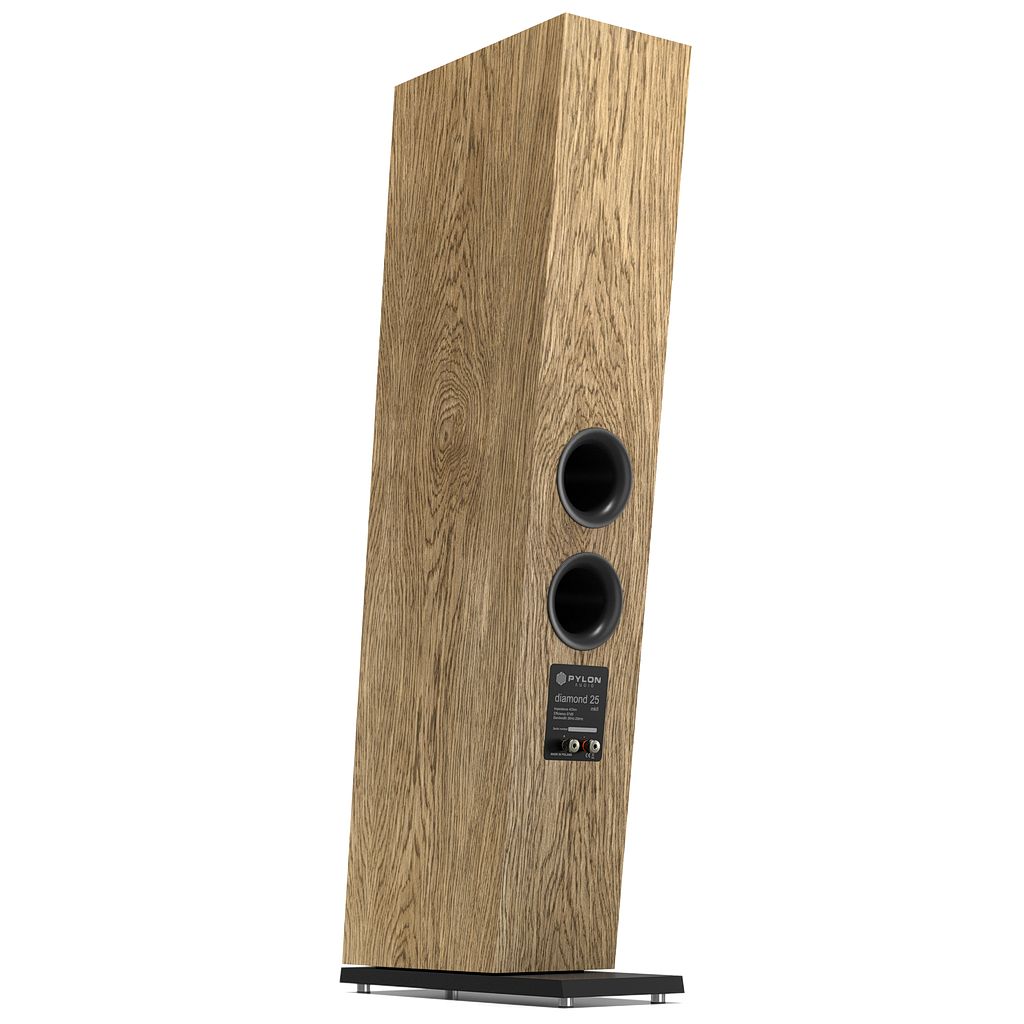
If you find the plinths too narrow, wider ones that will offer greater stability will soon be available.
Build Quality and Technical Parameters
Like its bigger brethren, the 25 MkII is equipped with upgraded drivers, redesigned by Pylon Audio’s engineers, in cooperation with SEAS and Scan-Speak. The treble range is reproduced by an improved version of the D2010/852100 tweeter, with a neodymium magnetic system, a cellular rubber front, and a dual resonance chamber. The midrange driver is a SEAS design modified by Pylon Audio. It’s equipped with a phase plug instead of a dust cover, to ensure more faithful reproduction of the midrange and remove coloration in its upper range caused by resonances under the protective dome. The 15cm woofer is equipped with a thin, long, and lightweight aluminum-copper voice coil for improved dynamics, speed, and agility in the lowest frequencies. The midrange driver and woofer are located nearer each other on the baffle than on the earlier model. Other changes were done to the cabinets’ tilt angle, which has been increased from 4° to 7°, the stabilizing plinths, and the dampening materials inside the enclosures, which include foam and natural sheep’s wool. When you unscrew the speakers, you can see that the materials weren’t placed haphazardly. Patches of foam were trimmed and carefully placed in the recesses between the internal reinforcements. The crossover is mounted on an MDF base glued to the rear panel, assembled using point-to-point wiring. At first glance, the crossover might seem a bit “prototypical”, but Pylon engineers claim that after having performed dozens of listening tests, this crossover design won every time over a “prettier” one mounted on a sleek PCB. The quality of the components used also deserves praise. Jantzen Audio Cross-Cap capacitors in speakers costing less than €3000 are a rare sight. An element that strongly enhanced the sound quality was reportedly an air coil inductor wound with 1.4 mm wire. The speaker was tested with a laser vibrometer and designed with the use of an anechoic chamber. The Diamond 25 MkII has an efficiency of 87 dB, with a rated impedance of 4 ohms. This might seem to suggest that the speakers need a relatively powerful amplifier to open up, but rest assured, they were easy to drive in my setup.
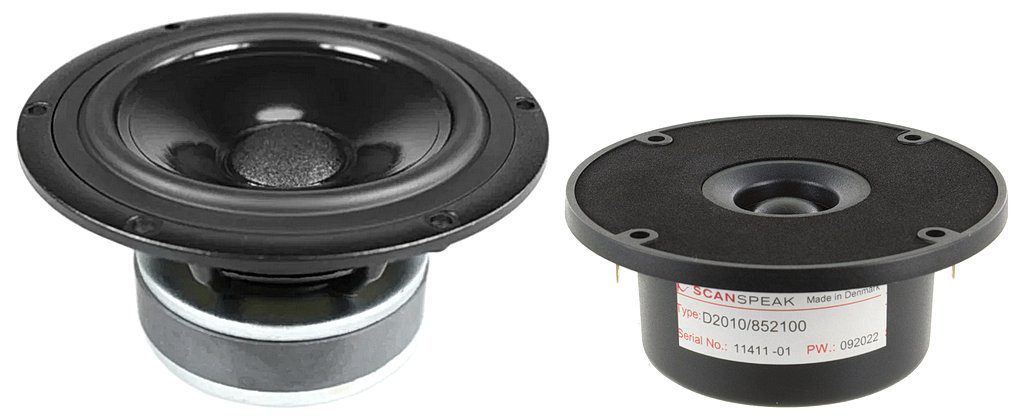
System Configuration
Loudspeakers:
- Audiovector QR5
Amplifiers:
- Equilibrium Nano
- Unison Research Triode 25
- Hegel H20
Streaming and Digital Sources:
- Auralic Aries G1
- Auralic Vega G1
- Marantz HD-DAC1
Turntables and Phono Stages:
- Clearaudio Concept
- Cambridge Audio CP2
Cables and Interconnects:
- Cardas Clear Reflection
- Tellurium Q Ultra Blue II
- Albedo Geo
- KBL Sound Red Corona
- Melodika Purple Rain
Power Conditioners and Accessories:
- Enerr One 6S DCB
- Enerr Tablette 6S
- Enerr Transcenda Ultimate
- Fidata HFU2
- Silent Angel N8
Headphones:
- Sennheiser HD 600
- Beyerdynamic DT 990 PRO
- Beyerdynamic DT 770 PRO
- Meze 99 Classics
- Bowers & Wilkins PX5
Mounts and Stands:
- Pro-Ject Wallmount It 1
- Custom Design RS 202
Acoustic Treatment:
- Vicoustic VicWallpaper VMT
- Vicoustic ViCloud VMT
Verdict
The new 25 doesn’t look that different from its predecessor, but in its internal design and sound quality there has been progress made I can only describe as groundbreaking. It offers a huge step forward over the first model in dynamics, transparency, speed, clarity, soundstaging, and musical boldness. It’s as if someone took the older 25 and unlocked its full potential. The MkIIs retain the natural tone and pulsating bass of the Mk1s, but at the same time, even during quiet listening, you get the sense that much more fun is waiting. When you crank the volume, the MkIIs open up and sing with a full voice, presenting sound on a scale unexpected from a floorstander this size. Maybe best of all is the price. If you compare these speakers with the competition, you might reasonably assume that their price of €2550 is per unit. But no—it’s per pair. Moreover, in recent years, especially since the pandemic, many hi-fi manufacturers have raised their prices on the same products by at least 50%, whereas here, compared to the previous generation of Diamonds, the price has increased by 25-30%, but the speakers have been improved. The new versions are more expensive, but also, if my experience with the 25 MkII is any indication, much better than they were. Such opportunities happen rarely in the world of audiophile equipment, so I’m happy to give the Diamond 25 MkIIs a well-deserved recommendation.
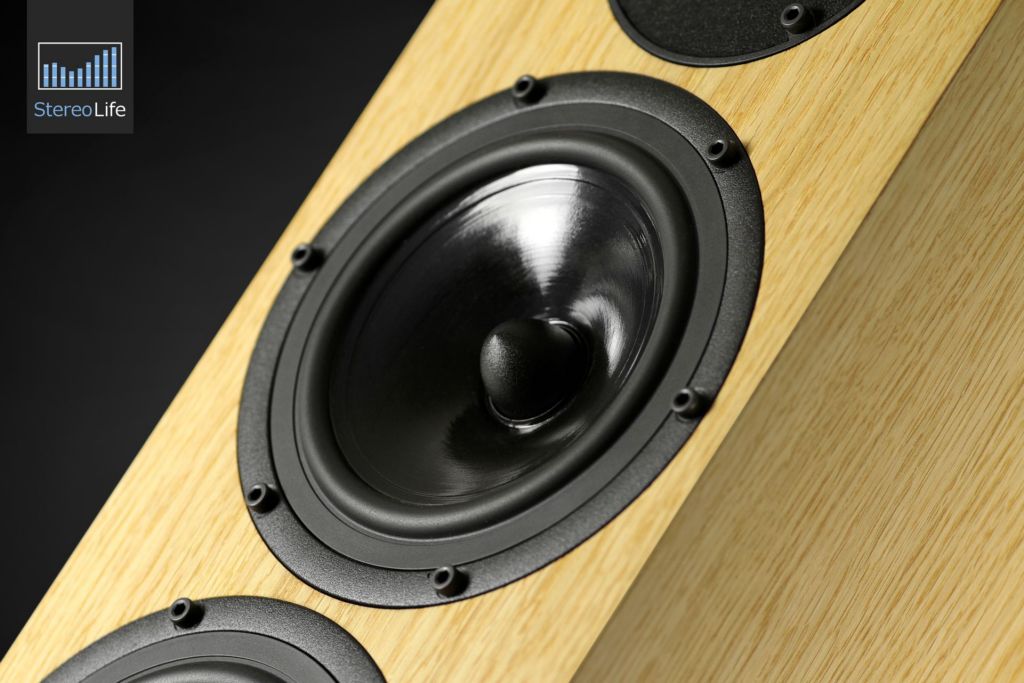
Technical Data
Speakers type: Floorstanding, dynamic, ported
Sensitivity: 87 dB
Impedance: 4 Ω
Frequency response: 36 Hz – 20 kHz
Dimensions (H/W/D): 98/16,5/41 cm
Weight: 19 kg (piece)
Price: €2550
Manufacturer: Pylon Audio
Editor’s Rating
Sound: 9
Functionality: 8
Design: 9
Quality: 9
Price: 9
Overall: 8.8

For more, visit StereoLife Magazine, a HiFi publication that offers “A Daily Dose of Audiophilism“.








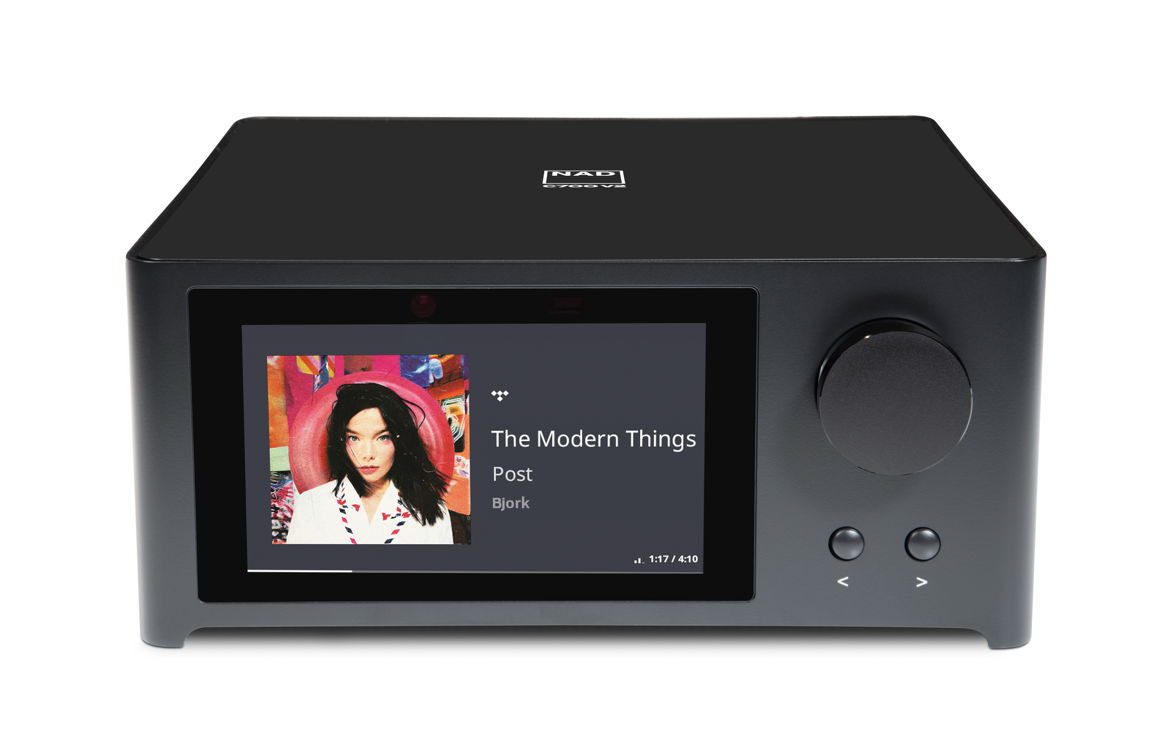





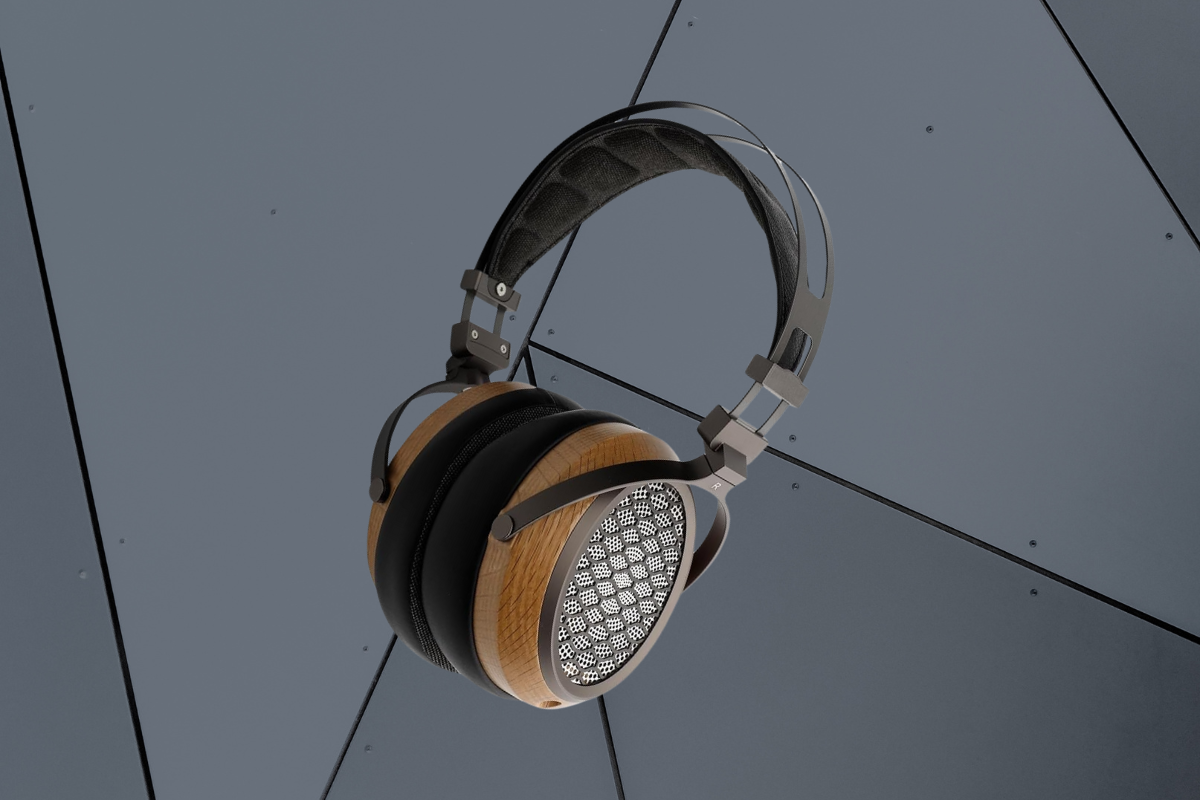

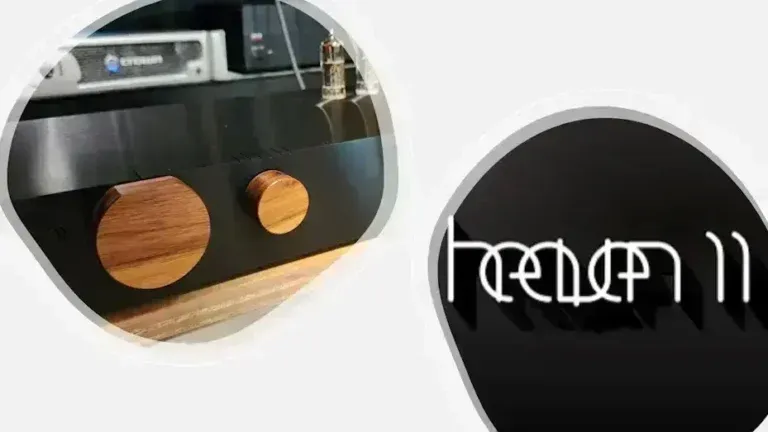

Leave a Reply